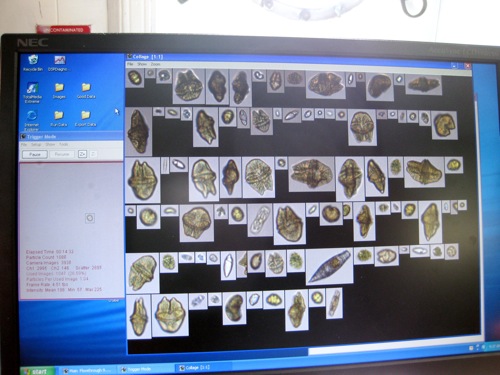You are here
Venus-dinos and blaming your equipment (9/3/09)

The FlowCAM display builds a collage of the various tiny organisms pumped past its lenses
Despite the reputation science enjoys -- perfectly white lab coats, neatly organized clipboards for recording data, and fancy expensive machines with beeping flashing lights -- stuff goes dirty and wrong all the time. Consequently, we learn to be constantly on guard for equipment failures...well, perhaps memory failure is more often the culprit, but we're getting better. Honest.
.jpg)
A close up of some of the critters shown above. Akashiwo are the big guys that look like bloomers (I think they look like the Venus of Willendorf, myself...plus I like the whole Venus-sea association...yes, I'm a dork)
We aren't sure what caused the bloom, but a few hypotheses were discussed. Perhaps the recent switch in winds to downwelling conditions have blown a moderate but widespread concentration of Akishiwo towards the edge of the Columbia River plume, where they have stacked up to form a dense aggregation? Perhaps the recent upwelling conditions drove a bloom of diatoms and now that it's over the changed water chemistry is facilitating a dino-bloom? Or we might just be seeing the results of a higher than usual level of stratification, or some impact of the reduced levels of oxygen at ~20m we observed on the Columbia River Hydroline. All very interesting possibilities! The nice thing about science as a technique for generating knowledge is that it's actually a bit better at generating more questions! One thing's for sure, that old maxim "trust your compass" has value beyond orienteering. I learned my lesson.



